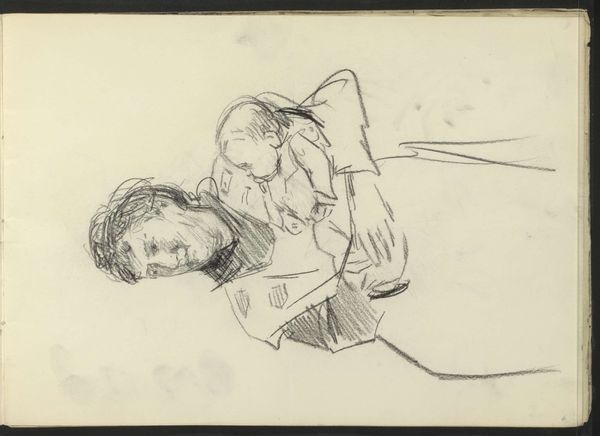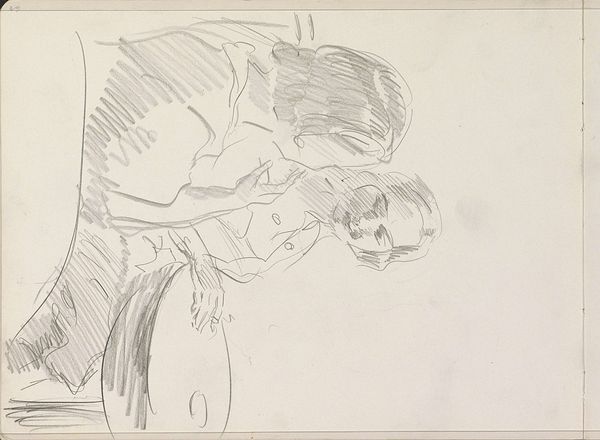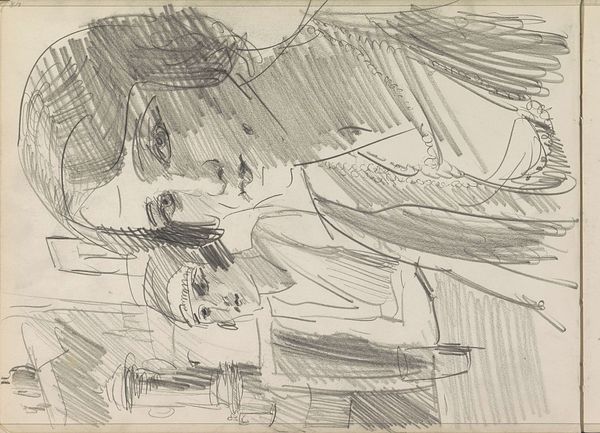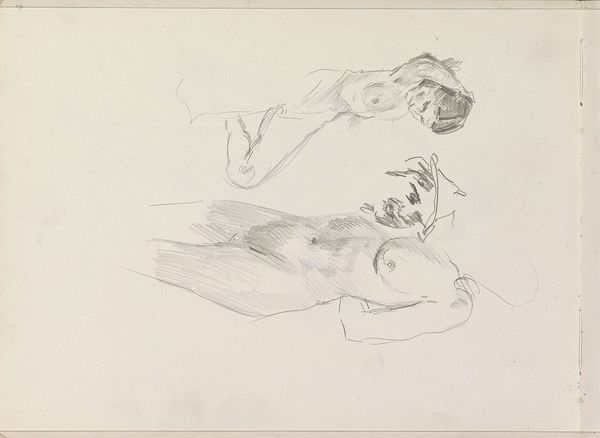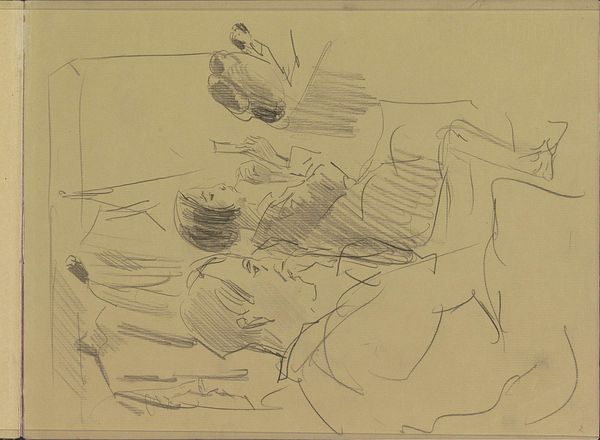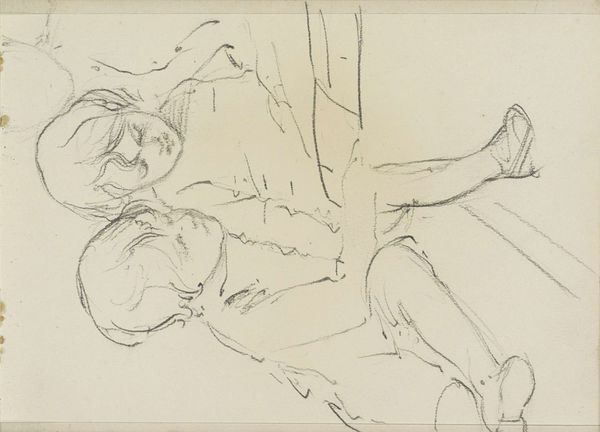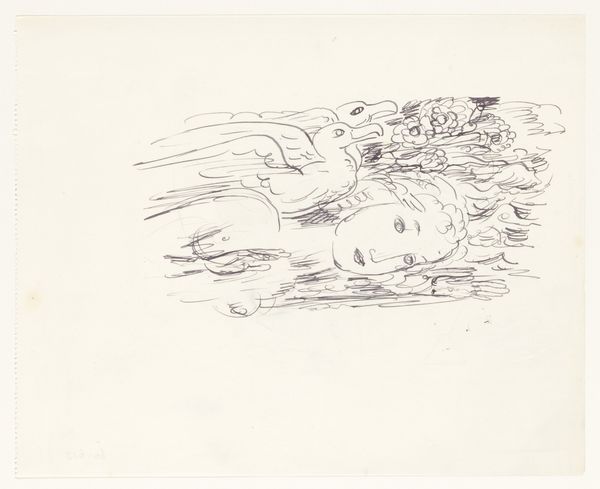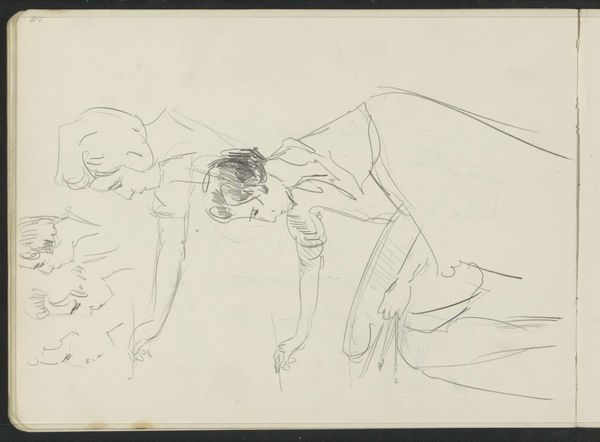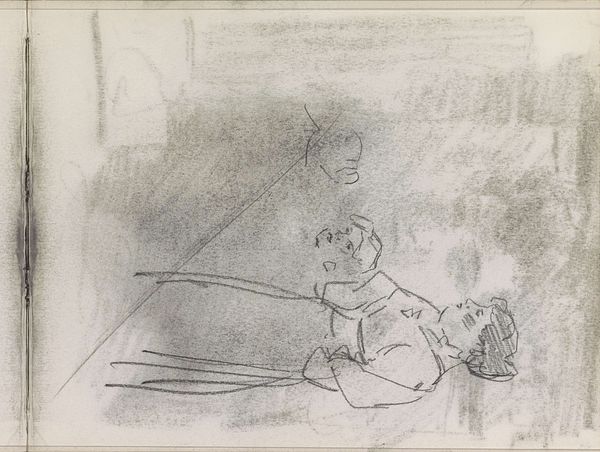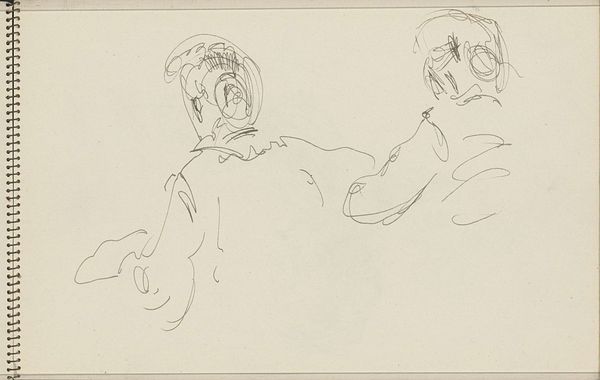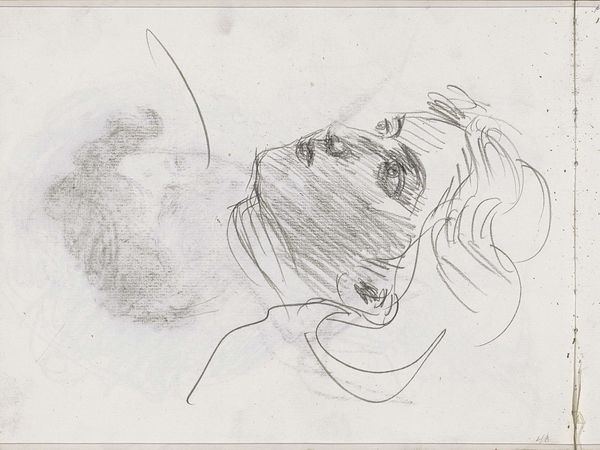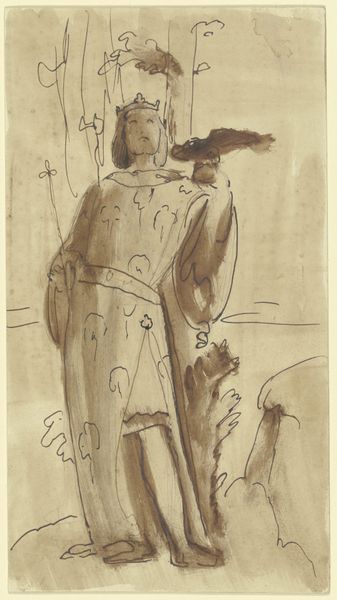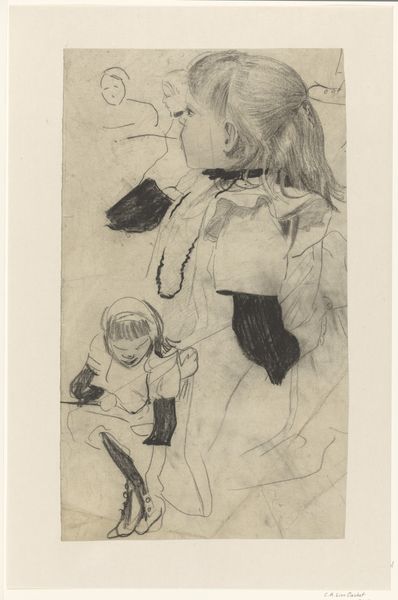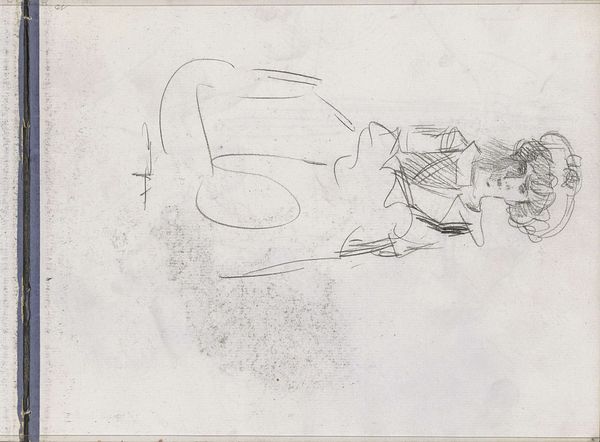
drawing, ink
#
drawing
#
figuration
#
ink
#
symbolism
#
history-painting
#
nude
Dimensions: 104 mm (height) x 212 mm (width) (bladmaal)
Editor: Here we have Joakim Skovgaard's "Eva og slangen" from the early 1900s, rendered in ink. There’s a certain starkness to the scene. What strikes you about this drawing? Curator: I am immediately drawn to the apparent simplicity of the materials – ink on paper. However, this choice isn’t so simple. Inexpensive materials make art available, and ink as medium speaks volumes; Skovgaard is making this old, symbolic story immediate to the public through simple means. Who exactly is implicated and benefits from that production process, the distribution, and the possible iconoclasm around those same subjects? Editor: So you’re less focused on the symbolic aspect of the biblical scene itself, and more on what the choice of drawing materials says about Skovgaard's approach? Curator: Precisely. Symbolism, as a movement, allowed artists to represent inner experience or societal critique. However, we must examine the material reality of how such representations are made manifest and consumed, questioning access and economic realities. The rapid lines, almost appearing unfinished, are key here. It means efficiency. Labor. How much art could Skovgaard produce like this? Where would it be shown, and for what sort of public? Editor: That’s a fascinating way to look at it. I guess I usually think about symbolism in terms of, you know, hidden meanings and archetypes, but thinking about the physical creation changes things. Curator: Think of it like this. How does the method of production--a quick sketch-- challenge our understanding of high art versus accessible imagery of moral tale? Whose version of that tale gets represented, by which method, and what class boundaries does this both enforce or erode? What moral judgement are we able to avoid just by calling this “art”? Editor: I never really considered that. I’m seeing now that examining the materials and the artistic process itself offers a completely different insight into the artwork. Curator: Precisely. We learn how art operates as more than aesthetics or personal statement; instead it becomes production of social meaning with tangible effects.
Comments
No comments
Be the first to comment and join the conversation on the ultimate creative platform.
